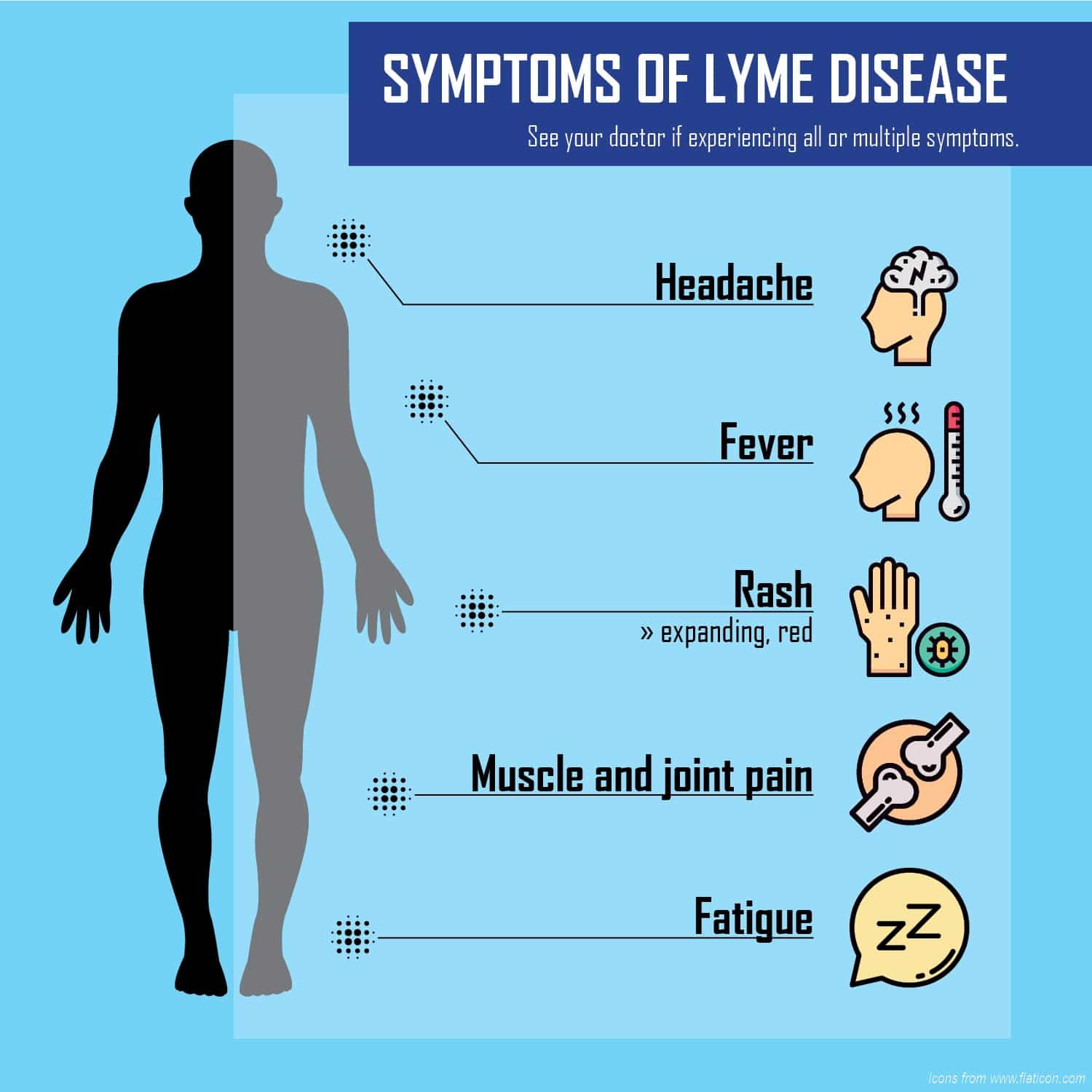Microbiologic Investigations Into Chronic Lyme Disease
There is very little microbiologic evidence that supports persistent B burgdorferi infection in patients who lack objective manifestations of Lyme disease, such as erythema migrans, arthritis, meningitis, and neuropathies. Advocates for CLD contend that our ability to detectB burgdorferi is hampered by current technology and an incomplete scientific understanding of B burgdorferi, and that conventional diagnostic testing misses patients with CLD., Naturally, this raises the question of why we should assume that chronic B burgdorferi infection exists at all if we are so ill-equipped to detect it. Even when chronically symptomatic patients have a well-documented history of treated Lyme disease, investigators have been unable to document persistent infection. A recent study in which ticks were allowed to feed on persistently symptomatic posttreatment patients yielded molecular evidence of B burgdorferi in 1 of 16 patients and no patient had cultivatable organisms.
Because validated testing methods fail to support the connection between B burgdorferi and clinically diagnosed CLD, physicians who specialize in CLD often turn to alternative tests. This has included the use of novel culture techniques, detection of B burgdorferi DNA in urine specimens, and enumeration of CD57-positive lymphocytes. Independent investigations, however, have repudiated the validity of these tests.
Clinical Approach To Patients With A Chronic Lyme Disease Diagnosis
Even if CLD lacks biological legitimacy, its importance as a phenomenon can be monumental to the individual patient. This is because many if not most patients who believe they have this condition are suffering, in many cases for years. Many have undergone frustrating, expensive, and ultimately fruitless medical evaluations, and many have become quite disaffected with a medical system that has failed to provide answers, let alone relief.
Beyond this generalization, patients referred for CLD have heterogeneous medical, social, and educational backgrounds. Furthermore, there is great variation in their commitment to a CLD diagnosis. Some patients are entirely convinced they have CLD, they request specific types of therapy, and they are not interested in adjudicating the CLD diagnosis. By contrast, others are not particularly interested in CLD per se, and are content to move on to a broader evaluation. In the authors experience most patients fall somewhere in betweena certain amount of time must be spent reviewing past experiences and past laboratory tests, then explaining why Lyme disease may not account for their illnesses.
Lyme Disease Prevention And Treatment
The summer is prime time for deer ticks to spread Lyme disease across Connecticut and most of the northeast. A warmer fall due to climate change means ticks will continue to pose a threat well into September and October.
Lyme disease is a bacterial infection discovered by two Yale physicians in 1975. When a group of children developed knee pain around Lyme, Connecticut, they suspected they were dealing with a new illness.
Joint or muscle pain is now recognized as one of the common symptoms of Lyme disease. Other symptoms can include fever, chills, swollen glands, heart palpitations, facial weakness and the classic bullseye rash. However, Yale New Haven Health infectious disease specialist , said that rash only looks like a bullseye in about one out of 10 patients. It can be a long time before some people develop any symptoms at all.
Lyme is typically broken down into three stages of infection and the last stage is called late or late disseminated Lyme and that can actually show up years after you get the initial tick bite, Dr. Grant said.
Read Also: Lab Work For Lyme Disease
Ask Your Rheumatologist Questions
RA is a serious and chronic disease that currently has no known cure. Therefore, its important to understand your condition as best as possible so you can take charge of your personal health.
Dont be afraid to ask your rheumatologist lots of questions about your symptoms, your diseases progress, and the medications typically used to treat RA . Its important to address any concerns you may have about your overall condition and/or the medications you are taking.
The more you know about your RA, the better decisions you can make about which treatment is right for you. And the better decisions you can make, the higher your quality of life will be. So ask your rheumatologist whatever it is you want to know. The only stupid question is the one you dont ask.
What Is A Rheumatologist

A rheumatologist is a physician or pediatrician who is trained in the area of rheumatology. This enables him or her to better diagnose, treat, and care for patients suffering from a variety of rheumatic diseases.
Rheumatologists have experience in treating many different forms of arthritissuch as RA, osteoarthritis, and psoriatic arthritiswith a specialty focused on musculoskeletal diseases and systemic autoimmune conditions that affect the joints, bones, and muscles.
RA is a complex connective tissue disease, making it difficult to diagnose in its early stages. Additionally, it can easily be confused with other conditions which have similar symptoms, such as lupus and Lyme disease. However, because of their advanced knowledge in this area, rheumatologists are often able to detect early signs of RA and other forms of arthritis that other doctors may not be able to initially identify.
Obtaining a RA diagnosis may require several visits on your part, but once the rheumatologist identifies and analyzes your symptoms, he or she can better determine the exact diagnosis and treatment options most suitable for you, the patient.
Also Check: Dr Jay Davidson Lyme Disease
When You May Need To See A Specialist
Though a family physician or general practitioner should be able to order the diagnostic tests for Lyme disease, there are some situations in which you may need to see a specialist. For example, untreated or misdiagnosed Lyme can develop into chronic Lyme disease, which can then lead to complications such as arthritic or neurological symptoms. In these cases, patients may need to see the following types of specialists:
- Rheumatologist Chronic joint problems from Lyme disease may need the care of a physician who specializes in rheumatology.
- Neurologist Chronic Lyme can be associated with debilitating neurological symptoms that must be treated by a specialist.
- Infectious disease specialist Again, even though this isnt always necessary, it can be helpful if your symptoms dont go away or become more complex.
- Cardiologist In the event that you develop the rare but dangerous complication known as Lyme carditis, you may need to see a cardiologist and even be fitted with a temporary pacemaker.
However, its important to remember that seeing a specialist for symptoms related to Lyme disease without treating Lyme disease is costly and dangerous. In other words, a rheumatologist or neurologist will not be able to treat your Lyme if no diagnosis has been made. They can simply help treat symptoms that result from chronic or untreated Lyme.
To treat Lyme disease, you must get an accurate diagnosis and be prescribed antibiotics.
How Stephanie Got Answers
About four years ago, Tait started to suspect she had Lyme disease. A family friend had Lyme, and Tait recognized some of her own symptoms appearing in her friend. She asked her doctor for an ELISA, an enzyme-linked immunosorbent assay, or a blood test thats typically the first way doctors test patients who may have Lyme disease. When she learned her insurance wouldnt cover the cost, she paid for the test out of pocket. It came back negative.
Tait, however, wasnt convinced. She asked for another test, but she said the doctor refused. So she turned to a private lab for a second test, this one a Western Blot, which doctors typically turn to next, to verify a positive ELISA result. That test was positive for the Lyme antibodies.
I sobbed, because there it was in my hands that I wasnt just jumping to conclusions, Tait said. I walked back into my doctors office and said, Here it is. They said, Well, we didnt do this test, so how do we know? I said, Youve got to be kidding me. I have a lab test!
Tait started getting treatment at a private clinic in Idaho that specializes in treating Lyme disease, about a six-hour drive from where she lives.
Lyme disease is typically treated with antibiotics, and when treated early, people with Lyme usually recover completely. Taits treatment plan included antibiotics, immunotherapy, various supplements as well as dietary changes. But because she had been sick for so long, some of her health problems were irreversible.
Read Also: How To Test For Chronic Lyme Disease
What Are The Most Common Chronic Lyme Disease Symptoms
Early symptoms often resemble the flu or general fatigue, so you may not connect the symptoms with a tick bite. About 70-80% of those infected with the bacteria develop a rash, which begins at the bite, then gradually expands. It may develop a bulls-eye appearance, but it can also look like an ordinary rash.
If the infection is left untreated, it spreads and causes symptoms like joint, muscle, and bone pain. In severe cases, Lyme disease leads to nerve pain, an irregular heartbeat, and brain inflammation. Schedule an appointment with the team at Ramos Rheumatology if you have any Lyme disease symptoms to ensure they catch it at an early stage.
What Is Lyme Disease
Lyme disease is an infection that is spread by ticks. You can get Lyme disease if you are bitten by an infected tick. But most people who have had a tick bite don’t get Lyme disease. It’s still important to see your doctor if you have a tick attached to you that you can’t remove.
Lyme disease is found in Canada. It is also found in the United States, Europe, and Asia.
Also Check: How Long Lyme Disease Last
Lyme Disease Vs Rheumatoid Arthritis
Lyme disease can sometimes be confused for other conditions, and its not uncommon for patients presenting with Lyme disease-related joint pain to be misdiagnosed with rheumatoid arthritis . Both Lyme and RA cause joint pain and can be debilitating when left untreated, but there are differences.
- Lyme arthritis tends to manifest in larger joints , on one side of the body. Lyme joint pain tends to come and go.
- Rheumatoid arthritis occurs more often in the hands, feet, fingers, and toes, and shows up on both sides of the body. RA joint pain and stiffness occurs every day, and is usually chronic.
- Lyme disease usually goes away when treated, and most patients make a full recovery.
- Rheumatoid arthritis treatment can manage symptoms and show the progression of the disease, but there is no cure.
Lyme pain can often migrate throughout the body, and patients may have pain in their knee one week, and in their wrists the following week, says Chicago-based integrative medicine specialist Casey Kelley, MD. With rheumatoid arthritis, the pain often stays where it begins and does not migrate.
Getting Lyme puts you at greater risk for later developing RA and other types of inflammatory arthritis. One study found that nearly one-third of participants who had Lyme-arthritis later developed an inflammatory arthritis.
Lyme disease symptoms typically begin 3-30 days after youve been bitten by a tick. Early symptoms of Lyme disease include:
- Bulls eye rash
What Increases Your Risk
The main risk factor for Lyme disease is exposure to ticks that are infected with Lyme disease bacteria. In areas where Lyme disease is widespread, such as the eastern and south-central areas of Canada, southern British Columbia, and northeastern United States, several factors may increase your risk, including:
- Spending time outdoors during the warm months of the year when ticks are most active. This is usually between May and November, with peak activity in June and July.
- Having indoor/outdoor pets. They can bring infected ticks into the house. Although dogs and cats can become infected with the Lyme disease bacteria, they cannot pass the illness to humans. But the infected ticks can drop off the animal and then bite and infect a person.
- Having a stone fence or a bird feeder near your house. Stone fences often become homes for mice, and mice may feed on spilled seed from a bird feeder. Where there are mice, there are ticks.
Remove ticks right away, as soon as you notice them. Your risk for getting Lyme disease increases the longer a tick is attached to your body. Ticks generally cannot transmit Lyme disease until they are attached for at least 36 hours.
Don’t Miss: Early Signs Of Lyme Disease In Humans
Potential Barriers To Accepting A Lyme Disease Vaccine
Welcome to another Inside Lyme Podcast with your host Dr. Daniel Cameron. In this episode, Dr. Cameron discusses the potential barriers to the public’s acceptance and utilization of a Lyme disease vaccine. By Dr. Daniel Cameron The study, Understanding consumer and clinician perceptions of a potential Lyme disease vaccine, was published by Devchand and colleagues in the journal Health Education Research.¹ It has been two decades since the LYMErix vaccine
Lyme Disease And Joint Pain: Its Complicated

For starters, Lyme is complicated and every patient responds to the disease differently.
Approximately 30,000 new cases of Lyme are diagnosed each year, according to the CDC, and just over one-third of them develop arthritis as a symptom. The most common symptoms beyond the bullseye rash are chills, fatigue, headache/neck stiffness, fever. Painful and swollen jointsespecially in large joints such as the kneeare often considered a late-stage symptom of Lyme, but can appear even days after the tick bite.1-3 Some individuals may find out they have Lyme as a result of chronic joint painwithout ever knowing they had a tick bite.
Ticks rarely carry just one strain of bacteria. They usually deliver several different species of bacteria and parasites in one bite these are called co-infections. Co-infections are one reason Lyme disease diagnosis and treatment can be so complex and difficult.
To investigate why joint pain is a common symptom of Lyme disease, I spoke to Thalia Farshchian, ND, a naturopathic doctor practicing at Medical Options for Wellness, a clinic in Foster City, California. She specializes in treating patients affected by chronic and complex diseases, including Lyme disease.
It is estimated that about 70% of individuals presenting with bullseye rash do not recall a tick bite,” she said. “It is important to note that the absence of a rash does not rule out Lyme Disease as diagnosis, but may be supportive of the diagnosis.”
You May Like: Will Lyme Disease Go Away
What Is The Best Treatment For Lyme Disease
Lyme disease is treatable and can be cured in most people, but its vital to begin treatment with oral antibiotics as early as possible. Dr. Ramos and Ms. Sokoloski may prescribe doxycycline, amoxicillin, cefuroxime, or another antibiotic to cure the infection.
They may also recommend supportive therapies that help your body fight the infection and heal more quickly, like intravenous nutrition therapy to boost your bodys natural healing ability and high doses of vitamin C.
Lyme disease treatment will be the same even if the disease spreads to other parts of your body. Most of the problems caused by Lyme disease, including arthritis, are cured with comprehensive treatment.
Moving Forward With Chronic Illness
Today Tait works as a writer and speaker. Her first book publishing in August, The View from Rock Bottom: Discovering Gods Embrace in our Pain, chronicles her journey with her health and how it impacted her faith. Writing gives her the freedom to work from home, but she’s well aware that for many years the financial burden has been on her husband, a software developer.
They recently took a rare vacation to Mexico. It was the first time theyd been on a plane together since their honeymoon more than a decade ago.
Tait has days when she feels strong enough to attend a speaking engagement at a church or play with her kids at the park. But she also has days when she struggles to move her body and relies on her cane.
For Tait, the hardest part is knowing that she would, in all likelihood, be completely healthy today had she just been diagnosed sooner. And the scariest part is knowing that it was all out of her hands.
I was asking for the right tests. I was saying the right things. I was showing up constantly and saying, This isnt working, Im not well. But eventually you start to doubt yourself, when you hear enough times that maybe its all in your head.
Now that she has answers, she can at least begin to move forward.
Don’t Miss: Medication For Lyme Disease In Dogs
Rheumatology: What Should I Expect When I See A Rheumatologist
A rheumatologist is a vital part of a rheumatoid arthritis patients healthcare team as he or she is the physician best able to diagnose the initial condition. The rheumatologist also recommends and prescribes the medical treatments needed to slow or possibly even stop the disease from progressing, helps the patient manage symptoms , and monitors the patient on an ongoing basis.
Treating Lyme Disease In Mexico
People treated with appropriate antibiotics in the early stages of Lyme disease usually recover rapidly and completely. Antibiotics commonly used for oral treatment include doxycycline, amoxicillin, or cefuroxime axetil. People with certain neurological or cardiac forms of illness may require intravenous treatment with antibiotics such as ceftriaxone or penicillin.
Also Check: Doctors Who Specialize In Lyme Disease
Explainer: How Djokovic Plans To Fight Deportation In Court
For women who have Lyme disease, the struggle can be especially difficult, given the complicated nature of the disease.
“The problem with Lyme disease is that there are so many different strains,” said Dr. Andrea Gaito, a New Jersey-based rheumatologist who specializes in treating Lyme disease. “One person can have it and have headaches, someone else can have joint pain, someone else can have palpitations. And none of these are specific to Lyme. There’s no Lyme test that’s 100% accurate. Unless you have a tick in a baggie, literally, and a bulls-eye rash, there’s sometimes a delay in diagnosis.”
A Long Journey of Pain and MisdiagnosisTait estimates that she had Lyme for about 15 years before she was diagnosed. She thinks she was bitten by a tick as a teen in Californias Bay Area, where she grew up. In high school, she was a dancer. Suddenly she was getting injured more than usual joints coming out of their sockets and ligaments tearing after doing normal routines. During class, she was exhausted and having trouble concentrating. Her grades started to slip.
Looking back, its now clear I was neurologically starting to not be myself, she said. But when youre a teenager, a lot of it is just attributed to, Youre a teenager!
Tait, who was thin with a bubbly personality, recalled one doctor telling her she was too pretty to be sick.
Eventually she was diagnosed with depression and prescribed an antidepressant.


